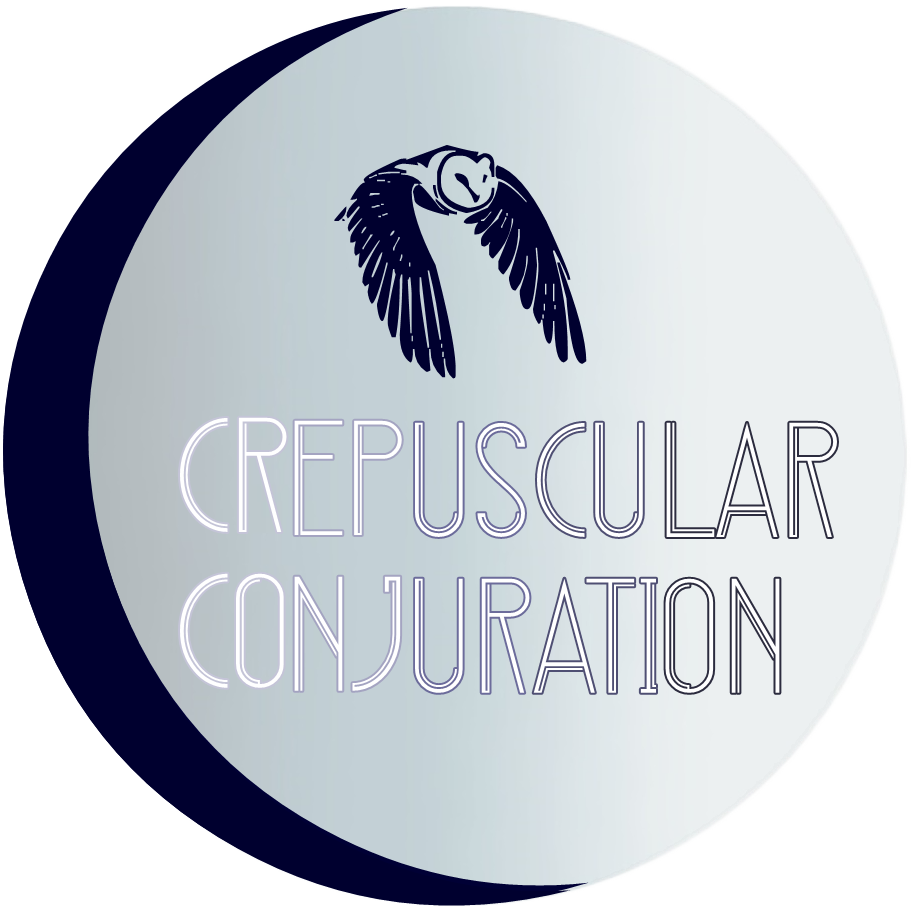The Rusted Rabbit: Finding Witchcraft in Family Rocks and Crystal Art
Lindsay of the Rusted Rabbit brings a refreshing perspective to modern witchcraft through her journey of wire-wrapped crystal jewelry, ancestral connections, and finding magic in everyday life. Her story begins with childhood rock collecting, transitions through personal challenges, and blossoms into a thriving business and spiritual practice. What makes her journey particularly compelling is how organically her craft and her witchcraft intertwined.
Lindsay's magical path didn't follow traditional routes. Instead of beginning with ceremonial rituals or dedicated spell work, her entrance into witchcraft came through her business, The Rusted Rabbit. Starting with chainmail jewelry inspired by Game of Thrones, she eventually discovered wire-wrapping and crystal work after experiencing the joy of gifting handmade bracelets at a regional Burning Man event. This intersection of creativity and spirituality formed the foundation of her practice, illustrating how art and craft can be profound gateways to magical thinking.
Perhaps most fascinating is Lindsay's connection to her ancestors, particularly her great-grandmother Brown, who was a spiritualist and tea leaf reader. Lindsay describes a vivid dream where her great-grandmother appeared to her, sharing something profound that she couldn't remember upon waking. This dream prompted conversations with her grandmother, revealing family spiritual practices that had previously been kept quiet due to the family's Christian background. This ancestral connection provides a powerful reminder that many of us may have magical lineages hidden in our family histories, quietly waiting to be rediscovered and honored.
Lindsay's approach to witchcraft embraces what she calls "lazy chaos witch" energy. She performs spells and rituals when called to them rather than adhering to strict schedules, emphasizing intention over rigid structure. She describes her practice as "finding magic in the mundane" and creating it herself in the world. This accessible approach makes witchcraft feel attainable for beginners and reminds experienced practitioners that sometimes the most powerful magic happens organically, not through complex ceremonial work.
Self-care emerges as a central theme in Lindsay's magical practice. From therapy to reconnecting with dance as an adult, she frames these activities as fundamentally magical acts. Her journey includes 19 months of sobriety, which she speaks about with pride and openness. This integration of personal wellness and magic offers an important perspective for the witchcraft community, where discussions about mental health and recovery are increasingly recognized as vital components of sustainable spiritual practice.
Lindsay's story highlights the importance of community in magical practice. Through her business, workshops, and participation in events, she creates spaces for connection. Her advice to new witches emphasizes finding your own path and not being afraid to ask questions as a beginner. She encourages witches to reject gatekeeping notions like "tarot decks must be gifted" and instead to trust their instincts and buy what resonates with them. This community-minded approach reflects the growing accessibility of witchcraft and the value of shared knowledge over secrecy.
Through craft, ancestral connection, self-care, and community building, Lindsay demonstrates that witchcraft doesn't need to follow prescribed paths to be authentic and powerful. Her journey reminds us that magic can be found in creating with intention, honoring our lineages, caring for ourselves, and connecting with others. For modern practitioners seeking to integrate magic into their everyday lives, Lindsay's approach offers an inspiring and accessible model.
